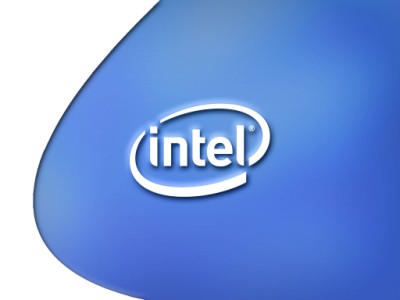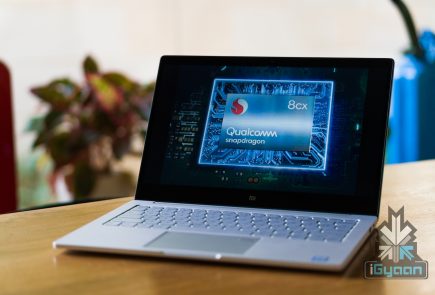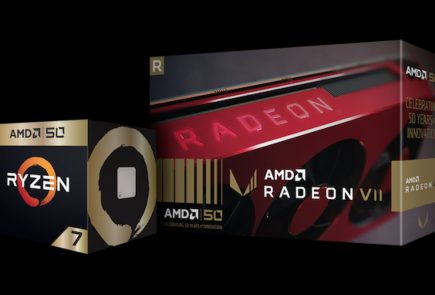Intel beat their own record of earnings : $3.7 billion net income (PR)

Intel has just posted results for the quarter, and this year they snagged a total revenue of US $ 14.3 billion — up $3.2 billion, or 29 percent year-over-year. Their total net income lies in at US $ 3.7 Billion. Is this what happens when almost any new invention utilizes your chips?
[toggle title_open=”Press Release” title_closed=”Press Release” hide=”yes” border=”yes” style=”default” excerpt_length=”0″ read_more_text=”Read More” read_less_text=”Read Less” include_excerpt_html=”no”]Intel Reports Record Revenue and Profit
$3.1 Billion Year-Over-Year Revenue Increase Fueled by Double-Digit PC Unit Growth and Data Center Strength
Buyback Authorization Increased by $10 Billion
Non-GAAP Results
Revenue: A record $14.3 billion, up $3.2 billion, 29 percent year-over-year
Gross margin: 64.4 percent, down 1.7 percentage points year-over-year
Operating income: A record $5.1 billion, up $895 million, 22 percent year-over-year
Net income: A record $3.7 billion, up $705 million, 24 percent year-over-year
EPS: A record 69 cents, up 17 cents, 33 percent year-over-year
GAAP Results
Revenue: A record $14.2 billion, up $3.1 billion, 28 percent year-over-year
Gross margin: 63.4 percent, down 2.6 percentage points year-over-year
Operating income: A record $4.8 billion, up $649 million, 16 percent year-over-year
Net income: A record $3.5 billion, up $513 million, 17 percent year-over-year
EPS: A record 65 cents, up 13 cents, 25 percent year-over-year
SANTA CLARA, Calif., Oct. 18, 2011 – Intel Corporation today reported third-quarter results, setting new records for microprocessor units shipped, EPS, earnings and revenue, which was up 28 percent year-over-year.
“Intel delivered record-setting results again in Q3, surpassing $14 billion in revenue for the first time, driven largely by double-digit unit growth in notebook PCs,” said Paul Otellini, Intel president and CEO. “We also saw continued strength in the data center fueled by the ongoing growth of mobile and cloud computing.”
On a Non-GAAP basis, revenue was $14.3 billion, operating income was $5.1 billion, net income was $3.7 billion and EPS was 69 cents. On a GAAP basis, the company reported third-quarter revenue of $14.2 billion, operating income of $4.8 billion, net income of $3.5 billion and EPS of 65 cents.
The company generated approximately $6.3 billion in cash from operations, paid cash dividends of $1.1 billion, and used $4.0 billion to repurchase 186 million shares of common stock. Intel’s board of directors also voted to increase the company’s buyback authorization by $10.0 billion, raising the total unused balance to $14.2 billion at the end of the third quarter. The company also completed a senior notes offering of $5.0 billion primarily for the purpose of repurchasing stock.
Q3 2011 Key Financial Information (GAAP)
Business unit trends:
PC Client Group revenue of $9.4 billion, up 22 percent year-over-year.
Data Center Group revenue of $2.5 billion, up 15 percent year-over-year.
Other Intel® architecture group revenue up 68 percent year-over-year.
Intel® Atom™ microprocessor and chipset revenue of $269 million, down 32 percent year-over-year.
McAfee Inc. and Intel Mobile Communications contributed revenue of $1.1 billion.
The platform average selling price (ASP) was up year-over-year and flat sequentially.
Gross margin was 63.4 percent, 0.6 percent below the midpoint of the company’s expectation.
R&D plus MG&A spending was $4.2 billion, slightly below the company’s expectation.
Net gain of $107 million from equity investments and interest and other, consistent with the company’s expectations of approximately $100 million.
The effective tax rate was 29 percent, above the company’s expectation of approximately 28 percent.
The company used $4.0 billion to repurchase 186 million shares of common stock.
Business Outlook
Intel’s Business Outlook does not include the potential impact of any mergers, acquisitions, divestitures or other business combinations that may be completed after Oct. 18.
Q4 2011 (GAAP, unless otherwise stated)
Revenue: $14.7 billion, plus or minus $500 million, on both a GAAP and Non-GAAP basis.
Gross margin percentage: 65 percent, plus or minus a couple percentage points.
Non-GAAP gross margin percentage: 66 percent plus or minus a couple percentage points, excluding certain accounting impacts and expenses related to acquisitions.
R&D plus MG&A spending: approximately $4.3 billion.
Amortization of acquisition-related intangibles: approximately $75 million.
Impact of equity investments and interest and other: a net loss of approximately $30 million.
Depreciation: approximately $1.4 billion.
Tax Rate: approximately 28 percent.
Full-year capital spending: $10.5 billion, plus or minus $300 million.
2011 will have 53 weeks of business versus the typical 52 weeks.
For additional information regarding Intel’s results and Business Outlook, please see the CFO commentary at: www.intc.com/results.cfm.
Status of Business Outlook
Intel’s Business Outlook is posted on intc.com and may be reiterated in public or private meetings with investors and others. The Business Outlook will be effective through the close of business Dec. 16 unless earlier updated; except that the Business Outlook for amortization of acquisition-related intangibles, impact of equity investments and interest and other, and tax rate, will be effective only through the close of business on Oct. 25. Intel’s Quiet Period will start from the close of business on Dec. 16 until publication of the company’s fourth-quarter earnings release, scheduled for Jan. 19, 2012. During the Quiet Period, all of the Business Outlook and other forward-looking statements disclosed in the company’s news releases and filings with the SEC should be considered as historical, speaking as of prior to the Quiet Period only, and not subject to an update by the company.
Risk Factors
The above statements and any others in this document that refer to plans and expectations for the fourth quarter, the year and the future are forward-looking statements that involve a number of risks and uncertainties. Words such as “anticipates,” “expects,” “intends,” “plans,” “believes,” “seeks,” “estimates,” “may,” “will,” “should” and their variations identify forward-looking statements. Statements that refer to or are based on projections, uncertain events or assumptions also identify forward-looking statements. Many factors could affect Intel’s actual results, and variances from Intel’s current expectations regarding such factors could cause actual results to differ materially from those expressed in these forward-looking statements. Intel presently considers the following to be the important factors that could cause actual results to differ materially from the company’s expectations.
Demand could be different from Intel’s expectations due to factors including changes in business and economic conditions, including supply constraints and other disruptions affecting customers; customer acceptance of Intel’s and competitors’ products; changes in customer order patterns including order cancellations; and changes in the level of inventory at customers. Uncertainty in global economic and financial conditions poses a risk that consumers and businesses may defer purchases in response to negative financial events, which could negatively affect product demand and other related matters.
Intel operates in intensely competitive industries that are characterized by a high percentage of costs that are fixed or difficult to reduce in the short term and product demand that is highly variable and difficult to forecast. Revenue and the gross margin percentage are affected by the timing of Intel product introductions and the demand for and market acceptance of Intel’s products; actions taken by Intel’s competitors, including product offerings and introductions, marketing programs and pricing pressures and Intel’s response to such actions; and Intel’s ability to respond quickly to technological developments and to incorporate new features into its products.
Intel is in the process of transitioning to its next generation of products on 22nm process technology, and there could be execution and timing issues associated with these changes, including products defects and errata and lower than anticipated manufacturing yields.
The gross margin percentage could vary significantly from expectations based on capacity utilization; variations in inventory valuation, including variations related to the timing of qualifying products for sale; changes in revenue levels; product mix and pricing; the timing and execution of the manufacturing ramp and associated costs; start-up costs; excess or obsolete inventory; changes in unit costs; defects or disruptions in the supply of materials or resources; product manufacturing quality/yields; and impairments of long-lived assets, including manufacturing, assembly/test and intangible assets.
Expenses, particularly certain marketing and compensation expenses, as well as restructuring and asset impairment charges, vary depending on the level of demand for Intel’s products and the level of revenue and profits.
The tax rate expectation is based on current tax law and current expected income. The tax rate may be affected by the jurisdictions in which profits are determined to be earned and taxed; changes in the estimates of credits, benefits and deductions; the resolution of issues arising from tax audits with various tax authorities, including payment of interest and penalties; and the ability to realize deferred tax assets.
Gains or losses from equity securities and interest and other could vary from expectations depending on gains or losses on the sale, exchange, change in the fair value or impairments of debt and equity investments; interest rates; cash balances; and changes in fair value of derivative instruments.
The majority of Intel’s non-marketable equity investment portfolio balance is concentrated in companies in the flash memory market segment, and declines in this market segment or changes in management’s plans with respect to Intel’s investments in this market segment could result in significant impairment charges, impacting restructuring charges as well as gains/losses on equity investments and interest and other.
Intel’s results could be affected by adverse economic, social, political and physical/infrastructure conditions in countries where Intel, its customers or its suppliers operate, including military conflict and other security risks, natural disasters, infrastructure disruptions, health concerns and fluctuations in currency exchange rates.
Intel’s results could be affected by the timing of closing of acquisitions and divestitures.
Intel’s results could be affected by adverse effects associated with product defects and errata (deviations from published specifications), and by litigation or regulatory matters involving intellectual property, stockholder, consumer, antitrust and other issues, such as the litigation and regulatory matters described in Intel’s SEC reports. An unfavorable ruling could include monetary damages or an injunction prohibiting us from manufacturing or selling one or more products, precluding particular business practices, impacting Intel’s ability to design its products, or requiring other remedies such as compulsory licensing of intellectual property.[/toggle]























